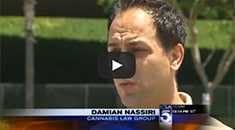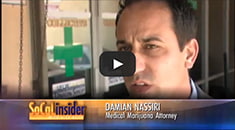Marijuana DUI Standards Continue to Perplex Law Enforcement
Eyelid tremors? Slow movement? Green tongue? If you ask law enforcement officers, these are indicators of a driver’s marijuana intoxication, used to justify traffic stops and arrests for driving under the influence of the drug. The problem is, if you ask a Los Angeles marijuana DUI defense lawyer, some of that is complete junk science. 
There is no doubt that THC, the psychoactive compound in marijuana, can result in a person’s intoxication, weakening one’s ability to focus and react quickly. What is in doubt is the best way to ascertain whether someone has crossed that threshold. We know that a person with a blood-alcohol concentration of 0.08 percent or higher can be reasonably judged as intoxicated, based on the science of how we know alcohol moves through the body – very quickly. But this kind of measurement of THC concentration won’t give you an exact answer because the drug is processed through the body at a much slower rate. It remains detectable in the body not just for hours but days or weeks, the concentration level a potential indicator of whether one is a regular user but not an accurate indication that one is too impaired to drive.
Despite this, at least five states have adopted a so-called “per se” law that outlaws driving if one’s blood level of THC exceeds a set amount. Most others, including California, are relying heavily on the training and testimony of “drug recognition experts.” Their methodology includes a series of assessments, including the standard field sobriety test, which might include exercises like the one-leg stand. Civil rights activists in several states have questioned whether DRE training is adequate and whether the program used to validate the results is backed by both the medical and scientific community. The New Jersey Supreme Court is slated to consider one such case in the coming months. Continue reading
 Cannabis Law Group's Medical Marijuana Legal Blog
Cannabis Law Group's Medical Marijuana Legal Blog




